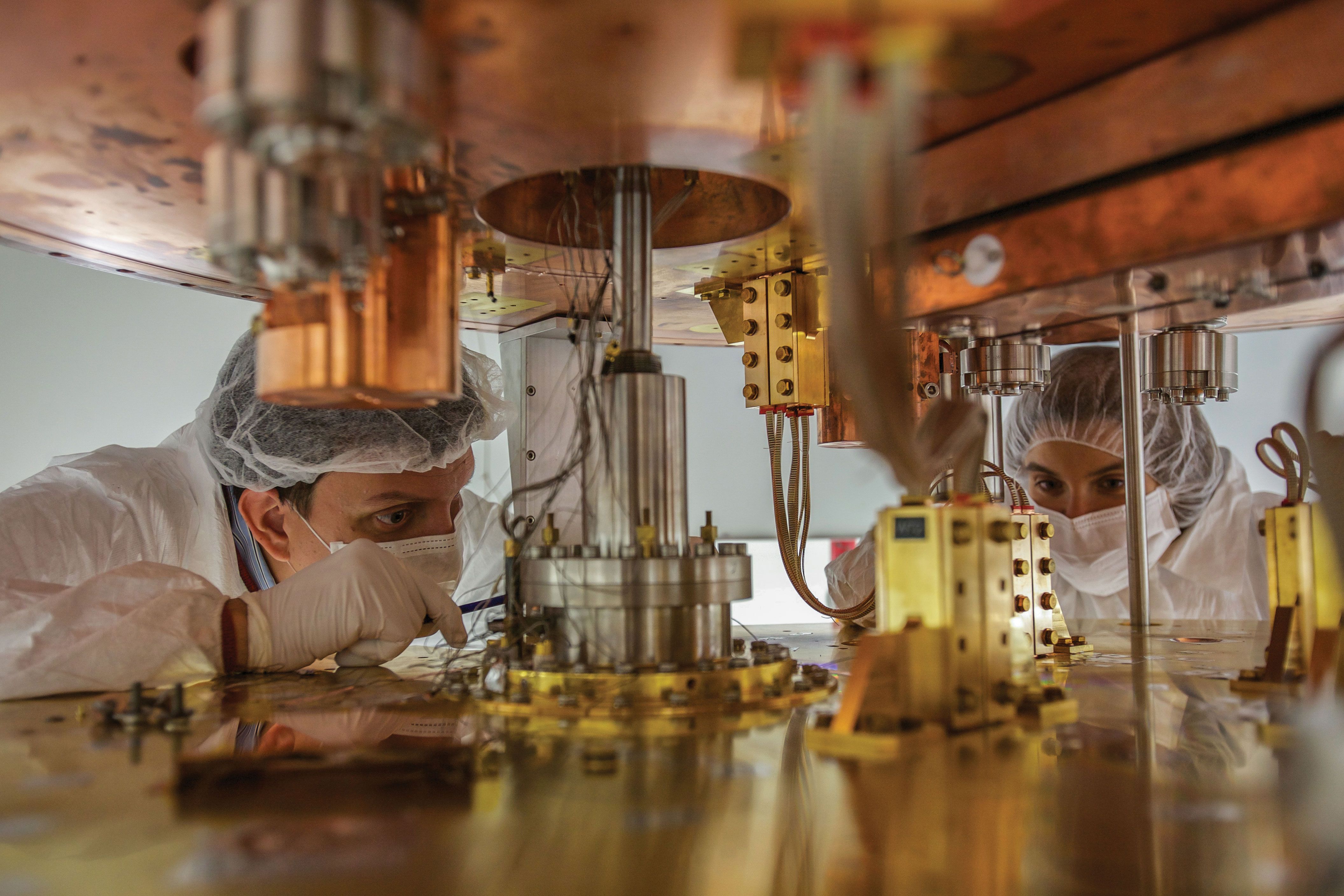
You can follow Levi on Twitter @TheEmpiriSylum
—
How did we get here? Physicists have been scratching their heads for a century trying to figure out why the Big Bang resulted in an abundance of matter over antimatter in the first place, nearly 14 billion years ago.
An international team of over 150 scientists, including physicists from UC Berkeley and Lawrence Berkeley Laboratory (LBL), recently took a big step forward toward solving this dilemma with the successful cooling of the world’s coldest cryostat (the technical term for an experimental freezer) to just six milliKelvin (-273.144°C). The Cryogenic Underground Observatory for Rare Events (CUORE), located deep underground in Italy, earned the title of “coldest cubic meter in the universe” in October 2014 when it held this mind-numbing temperature, just barely above absolute zero, for over two weeks straight.
CUORE will contain over 200 kilograms of radioactive tellurium (130Te), an element that may undergo a hypothesized form of radioactive decay called neutrinoless double-beta decay. As the tellurium slowly ages, minute spikes in temperature, indicative of neutrinoless double-beta decay, may occur—and CUORE’s sensitive heat detector will be ready to record it. In order detect such a subtle heat signature, the baseline temperature must be extremely cold, necessitating the use of the record-breaking cryostat.
Yury Kolomensky, professor of physics at UC Berkeley, senior scientist at LBL, and US spokesperson for CUORE, hopes that within a few years’ span, CUORE will have detected neutrinoless double-beta decay. “If it exists, it will prove that neutrinos and antineutrinos are the same thing,” says Kolomensky, potentially explaining how matter and antimatter were interconverted during the Big Bang. These measurements will also provide an approximation for the mass of neutrinos—subatomic particles so miniscule that trillions of them pass through us harmlessly every minute.
Kolomensky and his colleagues announced their preliminary results just a few weeks ago, proving that CUORE is capable of sensing these rare radioactive decays. Hold onto your seats—CUORE will be brought fully online in the next few months, poised to bring us one step closer to understanding the origins of our universe.
This article is part of the Spring 2015 issue.



